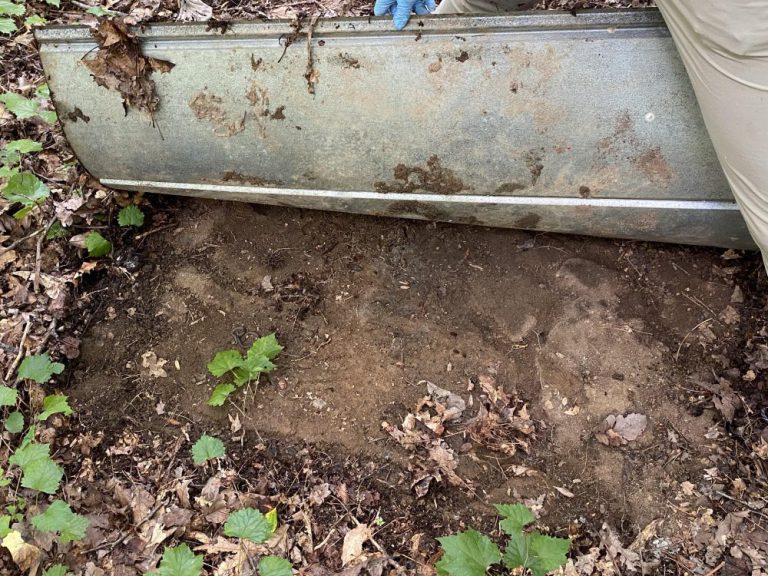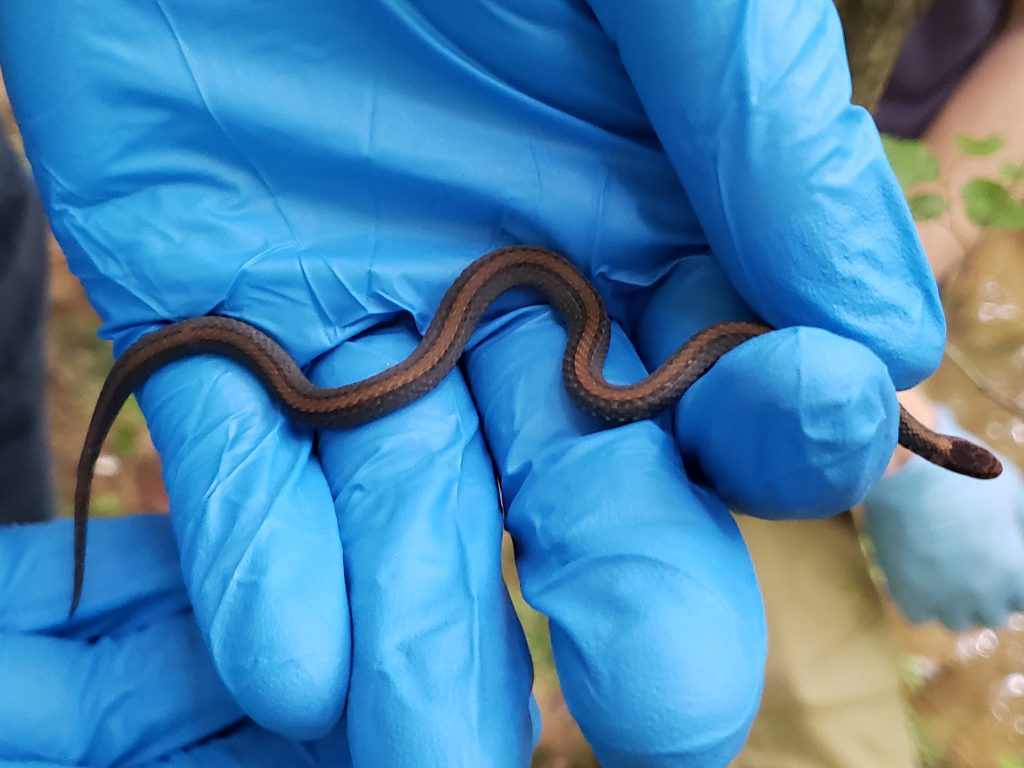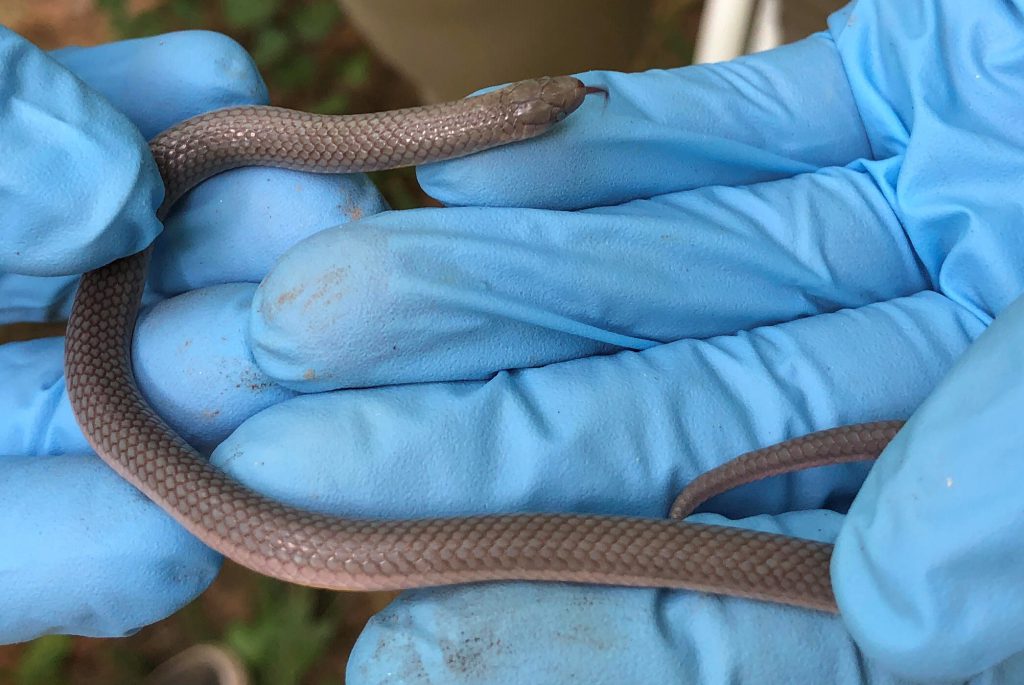On August 31, Dr. Goodman’s BIOL 349 Wildlife Biology course took a field trip to go “herping” (looking for reptiles & amphibians) in the woods along the Wilson Trail on campus. The group graciously donned masked and gloves in the humid woods as they waded along creeks, turned over rocks and logs, and lifted artificial cover objects (ACOs) that had been placed for a previous study. These 2 x 4 foot plywood and thin metal sheets are meant to provide artificial cover or homes for wildlife and an easy way to look in on them. This technique is often used by herpetologists in place of trapping lines because there is little risk to animals and so can be left unattended and checked with any frequency (unlike traps which have to be carefully maintained and closed or removed when not in use).

We saw several frogs including an American Toad (Anaxyrus americanus) and Northern Cricket Frogs (Acris crepitans). Jacob Whitney ’21 found a Dekay’s Brownsnake (Storeria dekayi) hiding under a rock. This small, harmless snake is common in natural places and yards in central Virginia and is typically 23-33 cm long as an adult.

Dr. Goodman found an Eastern Worm Snake (Carphophis amoenus amoenus). This small, harmless snake has been found many times in the campus woods and is typically 19-28 cm long as an adult. It consumes earthworms, insects, and other invertebrates and hides in leaf litter, dead logs, and mulch piles. The worm snake uses its narrow, pointed head to burrow and avoid predators.

Students practiced using pan fishing poles with string looped through the end in a special configuration to attempt “noosing” lizards, a harmless capture method whereby an animal can be caught at distance of up to 20 feet and then quickly released by loosening the loop of thread. We did not see any Eastern Fence Lizards (Sceloporus undulatus) which used to be common where the new dorms have gone up. We saw, but did not catch, a Five-lined Skink (Plestiodon fasciatus).
